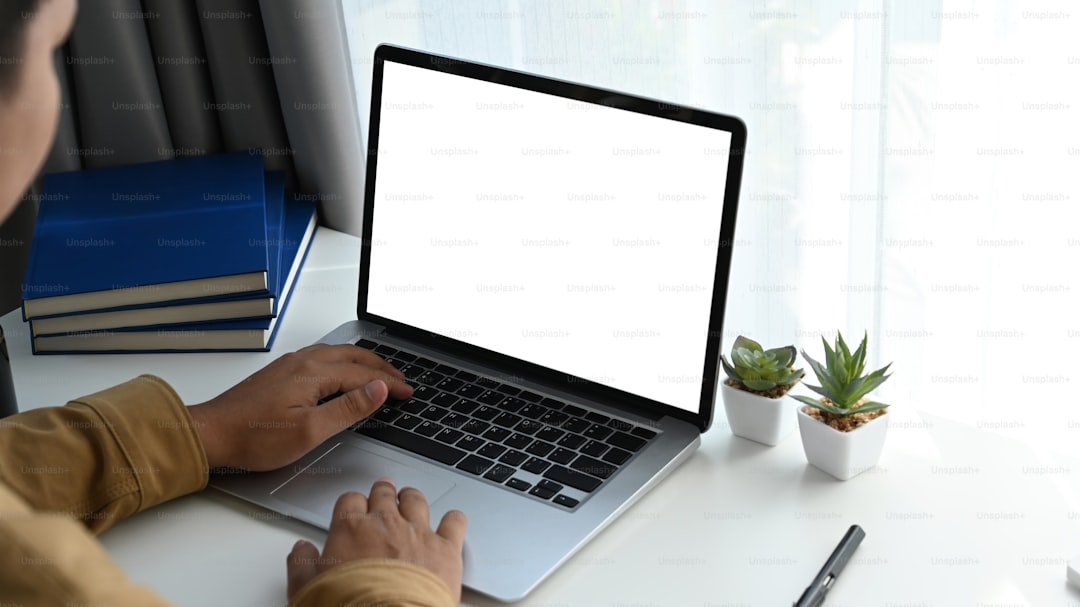Boost Your Efficiency with Proven Remote Work Strategies

Introduction
Remote work has moved from a niche perk to a mainstream reality for millions of professionals around the world. The freedom to choose where you work brings obvious benefits, but it also introduces new challenges that can erode productivity if they are not addressed deliberately. This article explores the most effective strategies that proven remote workers use to stay focused, organized, and motivated. By applying these tactics you can turn the flexibility of remote work into a competitive advantage and consistently deliver high‑quality results.
Understanding the Remote Work Landscape
Before diving into specific tactics, it helps to understand why remote work feels different from a traditional office setting. In a physical office, structures such as scheduled meetings, coworker proximity, and clear start‑and‑end times create a built‑in rhythm. When you work from a coffee shop, a home office, or a co‑working space, that rhythm disappears. The responsibility for creating your own workflow shifts entirely onto you.
Key distinctions to keep in mind:
- Physical separation from colleagues removes the natural “water cooler” moments that spark ideas and clarify expectations.
- Flexible hours can blur the line between personal and professional time, leading to overwork or under‑performance.
- Varied environments mean that noise levels, internet reliability, and ergonomic setup can change day to day.
Recognizing these differences is the first step toward building a system that compensates for the loss of office‑based cues while preserving the autonomy that remote work offers.
Designing a Dedicated Workspace
Your environment is the silent partner in every task you complete. A thoughtfully designed workspace reduces distractions, supports ergonomics, and signals to your brain that it is time to focus.
Choose the Right Location
- Quietness: Look for a spot with minimal foot traffic and background noise. If you live with others, a spare bedroom or a dedicated corner can work well.
- Natural Light: Exposure to daylight improves mood and reduces eye strain. Position your desk near a window if possible.
- Ventilation: Fresh air helps maintain alertness. Keep a window open or use a small fan.
Equip Your Desk for Success
- Ergonomic Chair: Invest in a chair that supports the natural curve of your spine. Adjust the height so your feet rest flat on the floor and your elbows form a 90‑degree angle.
- Monitor Stand: Elevate your screen so the top of the display is at eye level. This prevents neck strain.
- Keyboard and Mouse: Choose models that allow a relaxed wrist posture. A split keyboard can be beneficial for long typing sessions.
- Cable Management: Use clips or sleeves to keep cords organized and out of the way. A tidy desk reduces visual clutter and mental distraction.
Minimize Visual and Auditory Distractions
- Declutter Surfaces: Keep only essential items—computer, notebook, a water bottle—on the work surface.
- Noise‑Cancelling Headphones: Block ambient sounds with headphones that also allow you to play focus‑enhancing music or white noise.
- Digital Minimalism: Close unnecessary browser tabs and turn off non‑essential notifications.
Mastering Time Management
Effective time management is the cornerstone of remote productivity. Without a manager watching the clock, you need reliable systems to allocate, track, and review your work hours.
Adopt a Structured Planning Method
The Time Blocking technique works exceptionally well for remote workers. Break your day into distinct blocks dedicated to specific activities such as deep work, meetings, email processing, and breaks.
- Morning Block: Reserve the first two to three hours for high‑impact tasks that require deep concentration.
- Midday Block: Schedule collaborative activities like video calls, brainstorming sessions, or client check‑ins.
- Afternoon Block: Use this time for administrative duties, learning, and lighter tasks.
By assigning a purpose to each block, you eliminate the decision fatigue that often leads to procrastination.
Leverage the Pomodoro Rhythm
The Pomodoro technique pairs short bursts of focused work with brief rests. A typical cycle consists of 25 minutes of work followed by a 5‑minute break. After four cycles, take a longer break of 15‑30 minutes. This rhythm helps maintain mental stamina and prevents burnout.
Set Clear Daily Goals
At the start of each day, write down three to five specific outcomes you want to achieve. Use action‑oriented language: “Draft the proposal for client X,” not “Work on proposal.” Review the list at the end of the day to assess completion and identify any blockers.
Track Your Time
Even if you are not billing by the hour, tracking how you spend time reveals hidden inefficiencies. Tools such as Toggl, Clockify, or even a simple spreadsheet can capture the duration of each activity. Weekly reviews of this data highlight patterns—perhaps you spend too much time on email or get pulled into endless meetings.
Optimizing Communication and Collaboration
Remote work thrives on clear, concise, and intentional communication. When face‑to‑face cues are missing, the risk of misunderstandings rises, so establishing reliable channels and norms is essential.
Choose the Right Tools
- Instant Messaging: Slack, Microsoft Teams, or Discord provide quick, informal channels for questions and updates.
- Video Conferencing: Zoom, Google Meet, or Jitsi are ideal for scheduled meetings and screen sharing.
- Project Management: Asana, Trello, ClickUp, or Notion keep tasks visible, assign responsibilities, and track progress.
- Document Collaboration: Google Docs, Notion, or Office 365 enable real‑time editing and version control.
Establish Communication Protocols
- Response Time Expectations: Agree on acceptable windows for replying to messages (e.g., within 2‑4 hours during work hours).
- Status Updates: Use daily stand‑up channels or brief written summaries to keep the team informed of progress and obstacles.
- Meeting Etiquette: Set agendas in advance, start and end on time, and record meetings for those who cannot attend live.
Reduce Meeting Overload
Not every discussion requires a video call. Apply the “Lean Meeting” principle: before scheduling, ask whether the objective can be achieved through a short chat, an email thread, or a shared document. Reserve synchronous meetings for complex decision‑making, brainstorming, or relationship building.
Managing Distractions
Even with a perfect workspace, distractions inevitably arise. The key is to recognize triggers and implement strategies that keep them from derailing your flow.
Identify Common Interruptions
- External: Household chores, family members, pets, delivery notifications.
- Digital: Social media, news alerts, non‑essential apps.
- Internal: Wandering thoughts, fatigue, stress.
Implement Blocking Techniques
- Physical Boundaries: Use a “do not disturb” sign on your door or set a visual cue (e.g., headphones) that signals you are in focus mode.
- Digital Boundaries: Turn off non‑essential notifications, use website blockers like Freedom or Cold Turkey during deep‑work blocks, and keep personal devices out of arm’s reach.
- Scheduled Interruptions: Allocate specific times for checking email or social media—typically at the start and end of a work block.
Practice Mindful Refocusing
When a distraction pulls you away, pause, acknowledge the interruption, and then gently guide your attention back to the task. A brief breathing exercise (inhale for four counts, hold for two, exhale for four) can reset focus quickly.
Maintaining Work‑Life Balance
Remote work often blurs the boundaries between professional and personal life. Without deliberate separation, you risk overworking, burnout, and a decline in overall satisfaction.
Define Clear Working Hours
Even if you have flexibility, set a start time and an end time that align with your personal rhythm and the expectations of your clients or employer. Communicate these hours to colleagues and family members.
Create Transition Rituals
- Morning Routine: A short walk, a cup of coffee, or a brief meditation signals the start of the workday.
- End‑of‑Day Routine: Shut down your computer, tidy the desk, and make a “shutdown” checklist (e.g., log out of platforms, note pending tasks). This signals to your brain that work is over.
Take Regular Breaks and Vacations
Schedule short micro‑breaks throughout the day to stretch, hydrate, or step outside. Plan longer breaks—weekend getaways or a week of travel—just as you would in a traditional office role. Time away replenishes creativity and prevents chronic fatigue.
Prioritizing Health and Wellbeing
Physical and mental health are foundational to sustained productivity. Remote workers can easily neglect movement and social interaction, so intentional habits are crucial.
Incorporate Movement
- Desk Exercises: Perform shoulder rolls, neck stretches, and seated leg lifts every hour.
- Standing Desk: Alternate between sitting and standing to reduce the health risks associated with prolonged sitting.
- Scheduled Activity: Reserve time for a workout, a yoga session, or a brisk walk. Even a 20‑minute walk can boost mood and cognition.
Nourish Properly
- Hydration: Keep a water bottle at your desk and sip regularly.
- Balanced Meals: Plan meals that combine protein, healthy fats, and complex carbohydrates to maintain steady energy levels.
- Snack Smartly: Choose nuts, fruit, or yogurt over processed snacks that cause energy spikes and crashes.
Support Mental Health
- Social Connection: Schedule virtual coffee chats with colleagues, join online communities, or attend local co‑working events.
- Mindfulness Practices: Meditation, journaling, or breathing exercises can reduce stress and improve focus.
- Professional Help: If feelings of isolation or anxiety become overwhelming, seek counseling or therapy through telehealth services.
Continuous Learning and Skill Development
Remote work thrives on adaptability. The ability to learn new tools, techniques, and industry trends keeps you competitive and opens doors to higher‑value projects.
Set Learning Goals
Identify one or two skills you want to develop each quarter—whether it is a new programming language, a design tool, or a soft skill like public speaking. Break the goal into weekly milestones and allocate a dedicated learning block.
Leverage Online Resources
- Courses: Platforms such as Coursera, Udemy, or LinkedIn Learning provide structured curricula.
- Webinars and Workshops: Participate in live sessions to interact with experts and peers.
- Communities: Join forums, Discord servers, or Slack groups related to your field to ask questions and share knowledge.
Apply Learning Immediately
The best way to solidify new knowledge is to use it on real projects. Volunteer for a task that requires the skill, or create a personal side project that showcases your ability. Document the outcome in a portfolio or on your LinkedIn profile.
Leveraging Remote Job Boards and Listings
Finding the right remote opportunities requires more than just browsing generic job sites. Specialized boards connect freelancers, digital nomads, and remote full‑time workers with companies that embrace distributed teams.
Identify Trusted Platforms
- General Remote Boards: Remote.co, We Work Remotely, FlexJobs.
- Tech‑Focused Listings: Stack Overflow Jobs, AngelList, GitHub Jobs.
- Creative and Design: Dribbble, Behance, 99designs.
- Freelance Marketplaces: Upwork, Toptal, Fiverr Pro.
Optimize Your Profile
- Clear Headline: State your role and remote expertise (e.g., “Full‑Stack Developer – Remote‑First Specialist”).
- Concise Summary: Highlight years of experience, key achievements, and the value you bring to distributed teams.
- Portfolio Links: Include case studies or live demos that demonstrate remote collaboration skills.
- Skill Tags: Use relevant keywords that recruiters search for, such as “asynchronous communication,” “time‑zone management,” or specific tools like “Notion” and “Zapier.”
Apply Strategically
- Tailor Each Application: Reference the company’s remote culture and explain how your workflow aligns with their expectations.
- Showcase Remote Success: Provide examples of projects you completed while working independently or across time zones.
- Follow Up: Send a brief thank‑you note after an interview, reiterating your enthusiasm for remote collaboration.
Building a Productive Routine
Consistency breeds efficiency. While flexibility is a hallmark of remote work, establishing a repeatable routine anchors your day and reduces decision fatigue.
Morning Kick‑Start
- Wake Up at a Consistent Time – Align your wake‑up hour with your most productive period.
- Physical Activation – Stretch, do a short workout, or walk outside to increase blood flow.
- Plan the Day – Review your calendar, confirm time blocks, and set your top three priorities.
Core Work Period
- Deep Work Sessions: Schedule two to three blocks of 90‑120 minutes for tasks that require concentration.
- Collaboration Slots: Reserve times for meetings, pair programming, or client calls.
- Buffer Times: Include short gaps between meetings to process notes and prepare for the next activity.
Evening Wind‑Down
- Review Accomplishments – Check off completed items, note any unfinished tasks, and migrate them to the next day’s list.
- Digital Shutdown – Log out of work platforms, turn off notifications, and store devices out of immediate reach.
- Personal Time – Engage in hobbies, spend time with loved ones, or read for pleasure.
By repeating this pattern daily, you create a rhythm that trains your brain to enter focus mode quickly and disengage smoothly at the end of the day.
Measuring and Optimizing Performance
Regular assessment allows you to refine your processes and ensure that your remote setup remains effective.
Key Performance Indicators (KPIs)
Select metrics that reflect both output and quality, such as:
- Tasks Completed: Number of high‑impact tasks finished per week.
- Billable Hours (for freelancers): Hours logged versus projected income.
- Response Time: Average time taken to reply to client or team messages.
- Error Rate: Frequency of revisions or rework required.
Track these indicators in a simple spreadsheet or dashboard and review them weekly.
Conduct Self‑Audits
At the end of each month, ask yourself:
- Which time‑blocking strategies yielded the most focus?
- Were there recurring distractions that still need mitigation?
- How did communication practices affect project timelines?
Document insights and experiment with adjustments for the following month.
Seek External Feedback
Regularly request performance reviews from supervisors, clients, or peers. Constructive feedback uncovers blind spots and validates the effectiveness of your remote practices.
Cultivating a Remote‑First Mindset
Beyond tools and tactics, a mindset shift is essential for thriving in a distributed environment. Embrace the following principles:
- Ownership: Treat every task as if you were the sole person responsible for its success.
- Proactivity: Anticipate needs, communicate early, and propose solutions without waiting for direction.
- Transparency: Share progress, challenges, and decisions openly to build trust across distances.
- Adaptability: Be ready to adjust schedules, tools, or workflows as projects evolve or new technologies emerge.
When you internalize these attitudes, you become a reliable contributor regardless of physical location.
Conclusion
Boosting efficiency while working remotely is not about magical shortcuts; it is about building a solid foundation of environment, time management, communication, health, and continuous learning. By designing a dedicated workspace, mastering time‑blocking and Pomodoro techniques, leveraging the right collaboration tools, and protecting your mental and physical wellbeing, you create a self‑sustaining system that consistently delivers results.
Pair these habits with strategic use of remote job boards, a well‑crafted professional profile, and a growth‑oriented mindset, and you will not only survive the challenges of remote work—you will excel in them. The freedom that remote work offers becomes a powerful catalyst for productivity when guided by proven strategies and disciplined execution.
Random Posts

Hidden Gems for Remote Workers Across Europe
Discover Europe's offbeat towns where fast internet, low costs and authentic charm make remote work a joy, from Czech fairy tale streets to Portuguese coastal retreats, each spot offers a thriving digital nomad community.
1 month ago

How to Choose the Perfect Remote Work Hub and Fly Smart
Learn how to pick the ideal remote-work hub by weighing internet, cost, safety and community, then master smart flight strategies to cut costs, avoid fatigue and travel sustainably
1 month ago

Mastering Remote Work with Essential Tools and Focused Productivity Habits
Learn the must-have tech stack and daily habits that turn remote work into a high-performing, focused system, boosting collaboration, productivity and motivation wherever you are.
1 month ago

Affordable European Bases for Digital Freelancers
Discover budget-friendly European cities where freelancers can enjoy fast internet, vibrant coworking spaces, easy visa options and a high quality of life, perfect bases to grow a sustainable nomadic career.
1 week ago

Top Global Hubs for Digital Nomads with Smart Flight Strategies
Discover the worlds top digital-nomad hubs and learn cheap, flexible flight hacks to get you there so you can work from vibrant cities without draining your budget.
2 months ago
Latest Posts

Essential Software Every Remote Professional Should Use
Master remote work with essential tools: instant messaging like Slack, high definition video calls such as Zoom, and asynchronous voice apps. Streamline communication, stay connected and boost productivity.
1 day ago

Mastering Remote Work Productivity for Digital Nomads and Freelancers
Learn proven habits, tools, and tactics that help digital nomads and freelancers stay focused, deliver quality work, and maintain a sustainable lifestyle while traveling the world.
1 day ago

Tech‑Friendly European Towns Perfect for Remote Living
Discover Europe’s best small towns where fast internet, affordable living and vibrant tech communities let you work remotely while soaking up historic charm, lakeside views or mountain air.
1 day ago